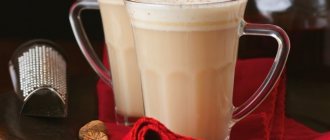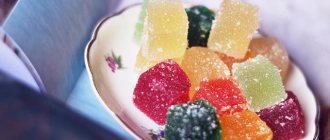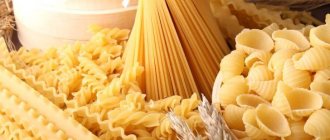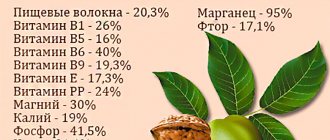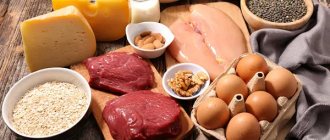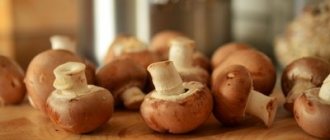Traditional Japanese snacks contain a variety of components, so it is impossible to answer the question whether sushi and rolls are prohibited or allowed on a diet. For example, if the food was not deep-fried during preparation, then such rolls are allowed to be consumed. We will help you understand this issue and explain which sushi you absolutely cannot eat and which you can.
We also want to note about rolls and sushi during a woman’s pregnancy. Pregnancy is a very important time for any woman, so it is necessary and important to approach the issue of your health with the utmost seriousness.
To begin with, it is best to consult your doctor who is managing your pregnancy. Many doctors do not advise eating rolls and sushi during pregnancy. But still, some doctors allow it with some reservations. For example, it is better to eat rolls and sushi that do not contain raw fish. It is better to give preference to dishes with vegetables - the simplest rolls with cucumber or avocado. But if you still want rolls and sushi with fish, then it is best to order hot rolls, as they are heat-treated. It is also advisable to limit the consumption of wasabi, soy sauce and ginger.
Order Rolls
The calorie content of one serving (do not forget that there are usually 4-6 such servings in one roll) varies from 30 to 150 calories. You can't get enough of one piece, and these numbers are multiplied by 4 or 6 times.
What are rolls
Not very thick oblong rolls made from sheets of seaweed (nori is the basis of the snack), inside of which boiled rice, raw sea fish (or other seafood), as well as soft cheese and vegetables are evenly spread, are called rolls. They are rolled using a special bamboo mat, which makes them slightly different from traditional sushi, which is prepared only by hand. Traditional seasonings that give the taste of rice rolls piquant and interesting notes - soy sauce, wasabi green Japanese mustard, pickled ginger.
Seaweed
Nori is a type of seaweed primarily used to make sushi. They contain a ton of nutrients, including magnesium, calcium, phosphorus, sodium, iron, iodine, vitamins C, A and E, and thiamine. In addition, their dry weight consists of 44% protein, the amount of which is comparable to plant protein products such as soybeans.
However, one serving of the rolls contains very little seaweed, making it unlikely that you will meet your daily needs for the above nutrients.
Nori can also provide the body with compounds that fight viruses, inflammation, and even cancer. However, the levels of these substances are probably too low to have any relevant beneficial health effects.
How many calories are in sushi and rolls?
This traditional Japanese snack has many different component variations, so the answer to the question of whether rolls contain calories becomes clear and logical - the calorie content of each dish depends on the ingredients. Different fillings have different calorie content, as do the seasonings to complement the dish. On average, the calorie content of a roll weighing 50 grams is from 50 to 110 kcal. Is it possible to eat rolls on a diet? If they are dietary, the method of preparing them does not involve frying the ingredients, then it is definitely possible.
Infection with parasites and bacteria
Eating sushi made from raw fish can increase the risk of infection by various parasites and microorganisms. Some of the species most commonly found in this dish include Salmonella, various Vibrio bacteria, and the parasites Anisakis and Diphyllobothrium.
It is important to note that regulatory authorities do not currently regulate the use of the "sushi fish" label. Therefore, this label does not guarantee that the food you eat is safe.
The only rule that works is that some types of fish should be frozen to kill parasites and only then served raw.
Some, including pregnant women, young children, the elderly and people with weakened immune systems, may need to avoid sushi made with raw fish entirely.
Are rolls harmful?
The question of the dangers of this already familiar dish is controversial. Seaweed, fish, seafood, hot spices in moderate quantities are extremely beneficial for the body (especially women) - they are rich in vital microelements. Another thing is the quality of these products, which applies not only to sushi. Any dish prepared from stale, unnatural ingredients can have a strong negative impact on health. Are rolls harmful? If you use high-quality raw materials in the cooking process and know when to eat them in moderation, they will not cause harm to either the stomach or the body as a whole.
Fish as the main ingredient
Fish is an excellent source of protein, iodine and numerous minerals and vitamins. In addition, it is one of the few foods that naturally contain vitamin D. Fish also contains omega-3 fats, which your brain and body need to function properly. These compounds help fight health problems such as strokes and heart disease. Eating fish also reduces the risk of some autoimmune diseases, depression and, in old age, vision and memory loss.
Rolls for diet
Is it possible to have rolls on a diet? The answer will depend on what kind of diet you prefer. If this is a hypocarbohydrate or protein diet, then it is clear that such a dish should be excluded from the list of permitted ones, because rice contains a lot of easily digestible carbohydrates. If the method of weight loss you have chosen does not limit food products, but only their quantity and method of heat treatment, it is easy to answer whether you can eat rolls on a diet: non-calorie rolls when losing weight are allowed and even welcomed.
Diet rolls
From the usual ingredients of this Japanese dish, you can prepare diet rolls that are suitable for a wide variety of diets, even strict ones. The main thing is to remember a few simple tips to reduce the calorie content of a dish, but maintain its beneficial properties:
- Regular white rice contains a lot of starch, which inhibits weight loss, so before boiling it must be washed several times or replaced with brown rice, which has a lower glycemic index.
- Avocado, soft cheeses, and mayonnaise are high in calories, so you should avoid such components of the dish.
- The smoked and salty ingredients of the filling retain fluid in the body and prevent weight loss.
- It is better to replace fatty fish (eel, herring) with fish with low fat content (tuna, pink salmon).
- For seafood, you should prefer shrimp or crab meat.
- Soy sauce, ginger, and wasabi should be limited. The first one contains a lot of excess salt, and hot seasonings whet the appetite. As a spicy dressing for the dish, you can prepare a sauce based on lemon juice with the addition of soy sauce and green mustard.
- What to do to lose weight on your arms and shoulders
- Tranquilizers - what are they, list of drugs. Effect of tranquilizers
- How to stop nosebleeds
Sushi diet for weight loss
And yet, is it possible to eat sushi on a diet? In some cases it is even necessary. For lovers of this familiar exotic, a special technique has been invented - the sushi diet for weight loss. The menu of the system is designed for a week, it involves split meals, alternating meat and fish days (the main ingredient of the filling on such days is fish or meat), the last day is vegetarian. The diet does not limit fresh vegetables, fruits and herbs. To make losing weight more fun, eat only with chopsticks, putting the fork aside for a while.
Diet on rolls
Another technique based on the consumption of the dish is the roll diet. It also allows you to eat only a variety of rice rolls, but a mandatory condition of the system is that they should not be fried, fatty, or high in calories. You cannot fry either the ingredients or the rolls themselves - oil makes them very high in calories. It is also not recommended to drink food with food, although you can drink herbal or green tea between meals. The daily norm of rolls is 20-25 pieces, the morning portion should be the largest. However, long-term adherence to this diet can be dangerous.
Wasabi as a main seasoning
This paste is traditionally served with sushi. Since its taste is very strong, this seasoning is used only in small quantities. Wasabi is made from the grated stem of Eutrema japonicum, which belongs to the same plant family as horseradish, cabbage and mustard.
The seasoning is rich in beta-carotene, isothiocyanates and glucosinolates. Research has proven that these compounds can have antibacterial, anticancer and anti-inflammatory properties.
However, due to a shortage of raw materials for preparing wasabi, some restaurants serve an imitation paste made from a combination of mustard powder, horseradish and green coloring. Such a product is unlikely to have similar nutritional properties and qualities.
Rolls with proper nutrition
Many ladies on the path to lightness and a slim figure practice proper nutrition. I wonder if it’s possible to eat rolls on such a diet? If they are dietary, made from rice, cucumber and lean fish, then why not? The main thing is not to eat sushi for dinner, but to include it in breakfast or lunch, making it more tasty and interesting. Low-calorie rolls with proper nutrition will also help you lose weight, and some will even make you squeal with pleasure thanks to such Japanese variety in your usual diet.
Pickled ginger
Sweet-spicy pickled ginger, called gari, is often served to cleanse the taste buds when eating various pieces of sushi. It is a good source of magnesium, potassium, manganese and copper.
In addition, ginger may have certain properties that help protect the body from viruses and bacteria. Studies have proven that it can improve memory and relieve nausea, muscle pain, joint pain, menstrual cramps and even LDL cholesterol.
Philadelphia rolls on pp. What rolls to prepare when you're losing weight
During the diet, you can eat a variety of types of treats. The best meals for losing weight are those that you prepare yourself. In this case, a person will be able to independently control the quality of the ingredients and calculate the approximate calorie content.
Approximate diet for eating rolls at different times of the day:
- morning: seaweed salad, 6 rolls with any dietary filling;
- day: miso soup and several Philadelphia rolls;
- evening: rolls with vegetables or vegetable salad.
Next we will look at what rolls you can eat while losing weight.
Philadelphia
To prepare the delicacy, the following ingredients are required: 100 g of trout, 50 g of soft cheese, a sheet of nori, a handful of sesame seeds.
The cooking recipe is as follows:
- The nori sheet is divided into 2 parts, one of which is placed on a special board.
- Spread a thin layer of rice on the seaweed.
- The workpiece is turned over with the filling down, and wasabi and soft cheese are placed on the seaweed.
- The roll is rolled into a roll
- At the end, a slice of fish is placed on the workpiece and decorated with sesame seeds.
Before consuming rolls during a diet, you should consult a specialist.
No rice
The calorie content of the dish is only 128 kcal per 100 g. Instead of rice, an omelette baked in a dry frying pan is added. To fill the diet roll you will need the following ingredients:
- several straws of fresh cucumber;
- 1 avocado;
- cottage cheese with a minimum percentage of fat content;
- 50 g lightly salted trout or salmon;
- lettuce leaves.
A sheet of nori is spread on a board. Place a fried omelette on top of it, so that the edges of the seaweed remain open. This simplifies the process of rolling nori into a roll. Thin strips of cucumber, avocado, and cottage cheese are placed on the omelette. The edges of the seaweed are lubricated with water and rolled into a roll using a special mat. The sheet is cut into 8 equal parts, and a layer of fish is placed on top of each of them. The dish is served on lettuce leaves with ginger.
With bread
This dish is ideal for relaxing in the countryside and for breakfast. In the process of its creation, dietary bread, cottage cheese (120 g), lightly salted fish (150 g), and fresh cucumber are used.
Before preparing the dish, the bread is softened and coated with cottage cheese. Place the preparations on a plate and put them in the refrigerator for 12 hours. In the morning, the softened bread is once again greased with cottage cheese and filled with filling: slices of red fish and cucumbers. The resulting sandwich is rolled into a tube and pierced with a toothpick.
Filling options can be varied at your discretion. Acceptable vegetables for use are tomatoes, bell peppers, fresh carrots, lettuce leaves. When on a diet, it is better to replace soy sauce served with rolls with lime or lemon juice.
Is it possible to eat sushi? 5 questions about sushi: is it harmful or not?
Question 1. They say there is a lot of mercury in fish. So, is it dangerous to eat a lot of sushi?
Mercury is indeed found in some types of fish, including salmon and tuna, which are used to make sushi and rolls. However, to say that there is really a lot of this fish in one serving of sushi would be a clear exaggeration. Believe me, the bulk of this dish consists of rice, vegetables, seaweed and omelette. And even if you eat sushi every day, you won’t eat more than 150 grams of fish in a week. Meanwhile, the upper limit for oily fish consumption is about 600 grams per week. For girls, pregnant and lactating women - half as much.
Question 2. Can sushi be considered a dietary food?
Compared to what we usually eat for lunch, it's possible. An average serving of rolls contains about 350 kilocalories, and the fat content is quite low - 3.6 g. Please note: only 2 g are so-called saturated fats, which are the cause of high cholesterol. For comparison, a regular hamburger contains about 15 grams of such fat.
Question 3. What harm do they do?
The only dangerous component of this dish is salt. Many believe that soy sauce is almost a healthy substitute for the “white death”. This is wrong. 2-3 teaspoons of sauce can contain up to 1 gram of salt (the daily value for an adult is no more than 6 g), so it is better not to overuse this product. If you want something spicy, try replacing it with ginger or wasabi mustard.
There is also a story that you can eat a portion of parasites along with sushi, which will then breed in your intestines and even your brain. Well, parasites do live in fish, but they die at temperatures below -4 °C. So if the ingredients in your rolls weren't fished out of the river right in front of you, you don't have to worry.
Question 4. Rice is a grain. So, sushi can make you fat?
Theoretically, you can get fat from anything - if you eat it in exorbitant quantities. As for rice, it really is not a low-calorie product. It contains a lot of carbohydrates, and those that are processed almost instantly.
But at the same time, the same sushi contains vinegar, which prevents the absorption of carbohydrates, and spices, which temporarily speed up your metabolism. Consider these effects to cancel each other out.
Question 5: Are sushi and sashimi equally healthy?
No. Sashimi is actually sliced fish fillet. Which, on the one hand, contains a lot of protein and fatty acids, and on the other, again, may contain mercury. So be careful. One sashimi is half your weekly requirement.
Mercury and other toxins
Fish may also contain heavy metals such as mercury due to ocean pollution. Predatory species such as tuna, swordfish, mackerel, marlin and shark tend to have the highest levels of this dangerous metal. Is it possible to eat rolls while dieting and avoid poisoning? A list of low-mercury seafood includes salmon, eel, sea urchin, trout, crab and octopus. These products are dietary.
Other types of toxins found in fish can lead to ciguatera or scomboid poisoning. Sea bass and red snapper are the most likely sources of ciguatera poisoning, while the latter poison is most often caused by eating tuna or mackerel. You can reduce this risk by avoiding fish species that may be contaminated.
The best types of rolls for weight loss
Sushi and rolls have different caloric content depending on the elements added to them. The most popular low-calorie rolls per piece include the following types:
- Avocado roll 14 kcal;
- tuna roll 14 kcal;
- salmon roll 27 kcal;
- roll with salmon and red caviar 39 kcal;
- California roll 40 kcal;
- roll with eel 55 kcal;
- Philadelphia roll 59 kcal.
The choice of low-calorie rolls and sushi is large, but when purchasing them you need to take into account additional calories. Chefs add cheese sauce to the dish and mix the sauce with mayonnaise, which adds calories to the sushi. Always check the menu and don’t be afraid to ask for a particular item not to be added on occasion. The ideal option on a diet is to prepare sushi yourself.
So, lovers of sushi or rolls should not be upset, since they will not face problems with excess weight and health. You can lose weight on the main dish of Japanese national cuisine, the main thing is not to overeat and follow the basic rules of the sushi diet.
Recipes
The most popular roll is called Philadelphia. It is prepared with a minimum of ingredients, but still tastes very good. You need to cut a sheet of nori in half, spread a thin layer of cooked rice over it, then turn the sheet over so the rice is facing down. A small amount of curd cheese is placed on the back of the nori, then the roll is rolled up on a special mat, and thin slices of salmon are placed on top.
Tip: Along with the cheese, you can wrap a fresh cucumber or avocado in a roll.
To make a Japanese omelette, you need to beat a few eggs in a separate bowl, and then pour a small portion into a hot frying pan so that the mixture covers the entire bottom. When the omelette “sets,” you need to roll it into a roll with a spatula and leave it in the frying pan, then immediately pour in a new portion of eggs. When it is ready, the roll is wrapped in the opposite direction and so on until the eggs run out. The finished roll is cut into transverse pieces and eaten with Japanese chopsticks.
Recipe for miso soup with shiitake mushrooms:
- Stew in water without oil 1 carrot, chopped on a “Korean” grater, grated ginger root (a piece of approximately 2.5 cm). Once ready, add 2 tbsp. dried shiitake mushrooms, simmer for a few more minutes.
- Transfer the mixture to a saucepan and add water. After boiling, add 2 tbsp. dried seaweed, rice noodles to taste and 200 g of tofu cheese without additives. Cook until the noodles are ready.
- In a separate cup, mix 3 tbsp. miso paste, hot water, 1 tbsp. soy sauce and the same amount of rice vinegar.
- Add the resulting sauce to the soup and stir. When serving, sprinkle the soup with chopped nori seaweed.
One of the popular Japanese salads is called Sunomono. To prepare it, you need to cut 700-800 g of fresh cucumbers into very thin slices (you can use a vegetable peeler). Then the vegetables need to be mashed well and left for a few minutes so that they release the juice. At this time, prepare the sauce: mix 1-2 tbsp. soy sauce, 2-3 tbsp. rice vinegar, 2 tsp. sugar and grated ginger to taste. The juice is squeezed out of the cucumbers, they are mixed with the sauce, and sesame seeds are sprinkled on top.
Another salad option involves using Wakame seaweed. You need to mix 450 g of this product in ready-made form (sold in the store) with 3 tbsp. sesame seeds, 0.5 tbsp. soy sauce, 0.5 tbsp water, 2 tsp. starch, 2 tsp. sesame oil and 2 tsp. lemon juice.
Soy sauce and weight loss
Ready-made soy sauce is fermented crushed soybeans mixed with salt, yeast and flour. Soybeans are rich in protein, potassium, magnesium and iron. They also contain phytoestrogens, which relieve women's health problems. At the same time, soy sauce has a low calorie content, which allows it to be used by those losing weight throughout the diet.
The only thing that can prevent you from getting a good plumb is the high salt content of soy sauce, but there are now many versions of this product available with reduced salt content.
Popular sushi - can you eat it?
One of the “top” dishes is sushi: nowadays almost no holiday, romantic evening or meeting with friends can pass without it. But is it safe for your figure to choose them as a main dish?
Let's start with the fact that almost everything that is called “sushi” is actually rolls, that is, pieces of filling wrapped in rice (prepared according to a special recipe), and/or nori – sheets of pressed seaweed. Sushi (sometimes you may hear another name - sushi) are molded portions of sticky rice with a piece of fish or seafood on top. The presence of nori in them is optional - for example, it could be a thin strip holding rice and fish together.
At first glance, everything is quite harmless - seaweed, rice, fish, seafood, fruits, vegetables. Unless rice raises some doubts, but, on the other hand, nutritionists recommend cereals in the form of complex carbohydrates. However, the same nutritionists are quite categorically against such Japanese dishes. What is the truth?
Sushi fitness. Why Sushi Fit?
You are what you eat.
Recently, people in Rus' have begun to think about what they eat and what lifestyle they lead.
At the age of 15–20, a person has what he received from nature at birth. At 45–50 years old we see what a person has done to himself. At the same time, any more or less competent specialist in any sports discipline will tell you that it doesn’t matter how well you train if you eat poorly. It is nutrition that plays a huge role in the formation of health if a person leads a sedentary lifestyle.
In any case, high-quality Japanese cuisine is by far the healthiest in its composition.
I have heard arguments many times that in the Caucasus people eat “roasted lamb” and at the same time live normally up to 100 years or more. I always want to object if you ate a piece of fatty lamb and then worked physically all day - this is one thing, but when you sit with such nutrition and grow your head into the monitor, and your back into the chair - a completely different calico with all the consequences...
Another point that worries mainly weight losers and fitness athletes, as well as beginners and not-so-builders, is the issue of calories.
No, I don’t want to say anything, counting calories around the clock may be cool, extremely scientific, but I doubt it’s practical (unless, of course, you are a super pro, a la Champ Arnold Classic).
Based on this, we at Sushi Fit Ufa have developed a line of King Size rolls. These are rolls for those who are very hungry, train seriously, or just pretend to be MASSIVE (those who need to will understand). These same rolls are quite suitable for small but very hungry girls.
For those who are not very hungry, who want variety for less money, those for whom King Rolls do not fit either in their mouth or in their pocket. Tadammmm..... - X-Size rolls.
Yes, we are still actively working on developing sets, so, dear friends, wait. Well, of course, write to my WhatsApp with your feelings and suggestions. I don’t promise that we will listen 100% (due to the fact that We are disgusting), but our development is due to your responses. Thank you!
Video: Dukan rolls
Recipe. Homemade rolls according to Dukan
Attention! The information presented in the article is for informational purposes only. The materials in the article do not encourage self-treatment. Only a qualified doctor can make a diagnosis and give treatment recommendations based on the individual characteristics of a particular patient.
Found an error in the text? Select it, press Ctrl + Enter and we will fix everything!
